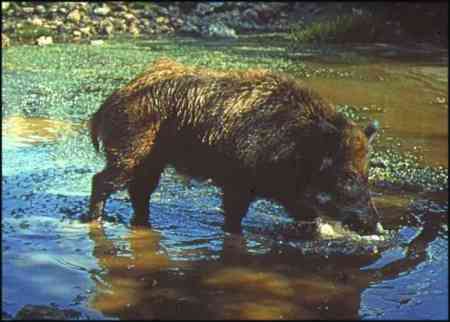Wild boar - Sus scrofa

Disappeared since the 18th century, the wild boar reappeared with natural reforestation without that people knew how to anticipate to the damage caused by the animals. Since the 1950's boar hunting is organized and fully integrated into the Cevennes culture.
Compact and massive, bulky and powerful snout.
The color varies among individuals, from light gray to dark brown. Moults 2 times a year. Adult max.80 cm at the withers, length 1.3 m.
Returns the soil in search for worms and also eats porcini mushrooms, roots, acorns, chestnuts, flower bulbs, fruits, insects, small mammals, snakes or even carcasse.'
Wild boars are old mammels (from the palaéolitic), but the specie has evolved larger than that those represented in prehistoric paintings. The females live in groups together with their young of several years, but the males live alone except for ruts period around December, the date depends on the food available.

 Campsites
Campsites Hotel-Restaurants
Hotel-Restaurants Hiker's accommodations
Hiker's accommodations Bed & Breakfast
Bed & Breakfast Selfcatering cottages
Selfcatering cottages Group gîtes
Group gîtes Quirky accommodations
Quirky accommodations Holiday villages
Holiday villages